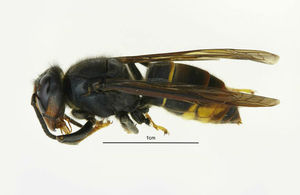Getting Hornets - Nature Watchers to the Rescue

07 April 2017 | Updated 01 January 1970
A new App launched to help people and businesses report sightings of the Asian Hornet is the latest weapon in the fight to prevent the spread of this highly invasive species.
Whilst on weekend walks or lunchtime strolls, people will be able to use Asian Hornet Watch to send pictures of suspect insects to experts at the National Bee Unit.
While Asian Hornets pose no greater risk to human health than a bee, they are a threat to our native honey bees, which is why it is important to quickly contain them, says the unit.
'By using the eyes and ears of smartphone users, we can more quickly identify any Asian Hornet nests in the UK and eradicate them before they have the opportunity to spread'.
Keeping bees
Biosecurity Minister Lord Gardiner said: “This new app is designed to be easy to use and allows people to report quickly any possible sightings of Asian Hornets, which will help us to halt their spread. This invasive species poses a threat to our native honey bees and we must do all we can to encourage vigilance."
The interactive app, developed by the Great Britain Non-native Species Secretariat and the Centre for Ecology and Hydrology, will also make it easier for people to judge whether an insect may actually be an Asian Hornet; with pictures available of other insects that it could be confused with and helpful information about their size, appearance and the times of year they are most likely to be spotted.
If there is a sighting of the Asian Hornet, the government’s well established protocol for eradicating the species will kick quickly into action. There are fears the pest could reappear this spring, so members nature watchers are being urged to report any sightings quickly to again allow inspectors to intervene.
Picture: Asian Hornets can be distinguished from their native counterparts by their abdomens, which are entirely dark except for a single band of yellow – native hornets’ abdomens are predominantly yellow.
Article written by Cathryn Ellis | Published 07 April 2017



.png)
.gif)
.gif)
.gif)



.png)

.png)
.jpg)





.jpg)



